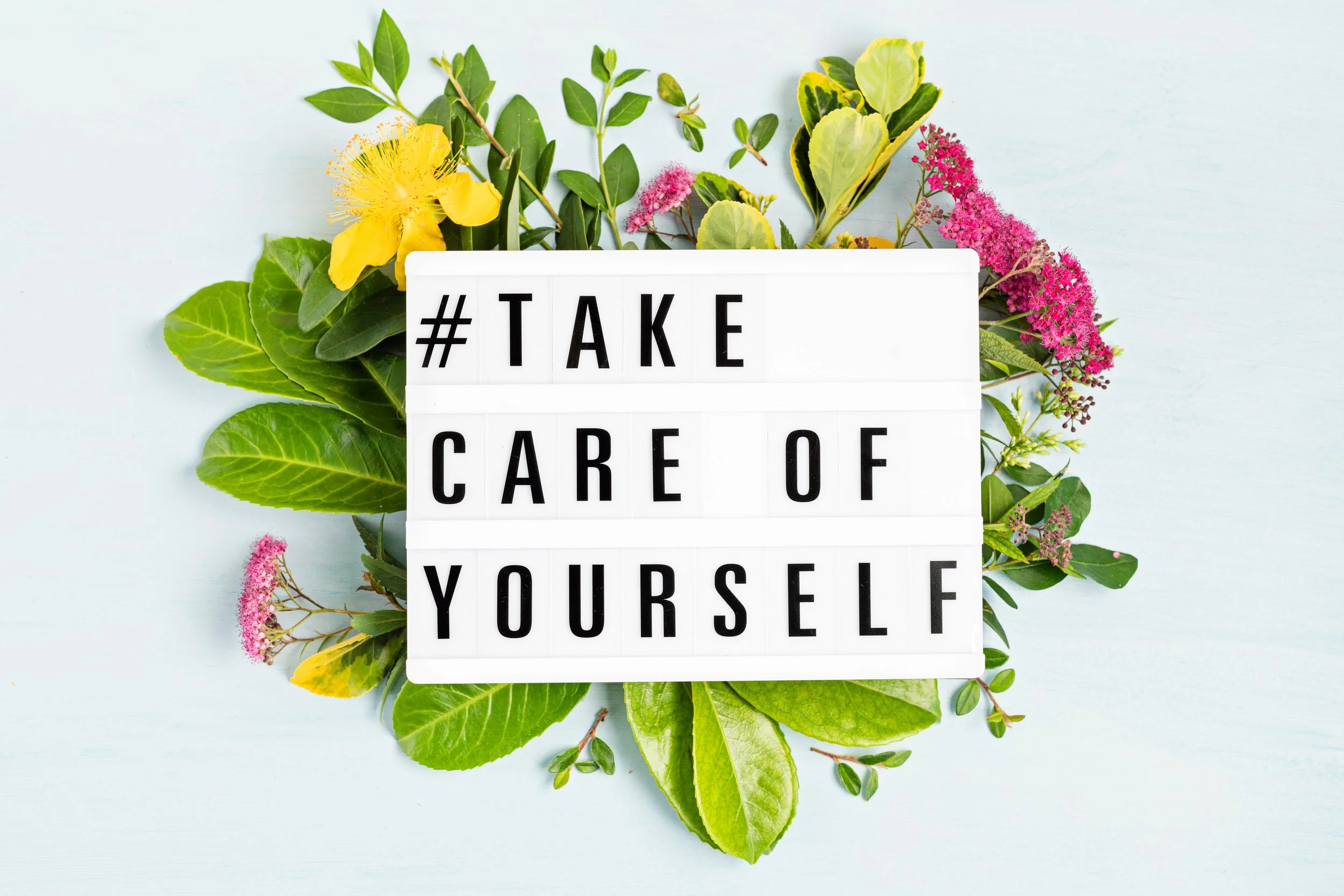
Breadcrumbing: The Silent Strain on Mental Health in Modern Relationships
Breadcrumbing refers to giving someone intermittent, non-committal attention—just enough to keep them engaged—without any genuine intention of deepening the relationship. This behavior often manifests through sporadic texts, likes on social media, or vague promises of future plans that never materialize. While commonly associated with romantic relationships, breadcrumbing can also occur in friendships, creating confusion and emotional distress across relational contexts.
What Is Breadcrumbing?
Breadcrumbing refers to giving someone intermittent, non-committal attention—just enough to keep them engaged—without any genuine intention of deepening the relationship. This behavior often manifests through sporadic texts, likes on social media, or vague promises of future plans that never materialize. While commonly associated with romantic relationships, breadcrumbing can also occur in friendships, creating confusion and emotional distress across relational contexts.
Psychologically, breadcrumbing operates on the principle of intermittent reinforcement, which explains why unpredictable attention keeps individuals hooked, hoping for more, even as the relationship remains stagnant (Tokunaga, 2016). This dynamic fosters insecurity, erodes trust, and perpetuates cycles of hope and disappointment.
Identifying Breadcrumbing in Romantic Relationships
In romantic contexts, breadcrumbing often looks like:
Inconsistent communication: Days of silence followed by casual check-ins like “Hey, stranger.”
False promises: Talking about future plans that never happen.
Minimal effort: Engaging just enough to maintain interest without progressing toward commitment.
Research shows that breadcrumbing correlates with lower life satisfaction, increased loneliness, and feelings of helplessness among adults who experience it regularly (Papp & Erchull, 2021; LeFebvre, 2018).
Breadcrumbing in Friendships
Breadcrumbing isn’t confined to dating. In friendships, it may appear as:
Surface-level engagement: Occasional likes or comments on social media without meaningful interaction.
Empty invitations: Suggesting plans but never following through.
Emotional inconsistency: Offering support sporadically, then disappearing when needed most.
This pattern can be particularly harmful because friendships are often a primary source of emotional support. When that support becomes unreliable, individuals may experience heightened anxiety and diminished trust in social connections (Navarro & Villora, 2021).
The Mental Health Impact
Breadcrumbing is not just frustrating—it’s psychologically harmful. Studies indicate that exposure to breadcrumbing is associated with:
Anxiety and emotional insecurity: The uncertainty of where one stands breeds chronic stress (Navarro et al., 2020).
Low self-esteem: Sporadic attention reinforces feelings of inadequacy and self-doubt (Villora et al., 2019).
Loneliness and helplessness: Victims report diminished life satisfaction and increased isolation (Papp & Erchull, 2021).
Paranoid ideation: In severe cases, breadcrumbing can erode perceived social support, contributing to mistrust and paranoia (Navarro & Villora, 2021).
The cumulative effect of breadcrumbing, ghosting, and similar behaviors can impair coping mechanisms and increase vulnerability to revictimization, particularly among younger adults (LeFebvre, 2018).
Adding Perspective: Breadcrumbing Isn’t Always Malicious
It’s important to note that breadcrumbing is not always intentional or meant to cause harm. Sometimes, people breadcrumb because they are unsure of what they want, overwhelmed, or lack the emotional capacity for deeper engagement. In these cases, the behavior reflects their limitations rather than deliberate manipulation.
However, if you have clearly expressed your needs and expectations and the pattern continues without meaningful change, it becomes a signal to reassess. At that point, you need to decide:
How much energy and emotional investment you want to give this relationship.
Whether the dynamic aligns with your values and mental health needs.
Setting boundaries and prioritizing your well-being is essential—even when the other person’s intent isn’t malicious.
Why Does Breadcrumbing Happen?
Motivations behind breadcrumbing often include:
Fear of commitment.
Desire for attention without responsibility.
Emotional unavailability.
Power and control dynamics (Papp & Erchull, 2021).
Understanding these drivers is essential for recognizing that breadcrumbing reflects the breadcrumber’s limitations—not the recipient’s worth.
Breaking the Cycle
If you suspect you’re being breadcrumbed:
Recognize the signs: Inconsistent communication and vague promises are red flags.
Set boundaries: Communicate your needs clearly and enforce limits.
Prioritize self-worth: Seek relationships that offer consistency and mutual respect.
Access support: Therapy can help rebuild self-esteem and develop strategies for healthier connections.
Final Thoughts
Breadcrumbing may seem trivial in a world of casual connections, but its psychological toll is real. Whether in dating or friendships, this pattern undermines emotional security and mental well-being. By naming and addressing breadcrumbing, we empower individuals to reclaim their time, energy, and sense of worth.
References
LeFebvre, L. E. (2018). Ghosting and breadcrumbing in emerging adulthood: Digital dating behaviors and mental health. Journal of Social and Personal Relationships, 35(9), 1251–1279. https://doi.org/10.1177/0265407517704090
Navarro, R., Larrañaga, E., Yubero, S., & Villora, B. (2020). Psychological impact of cyber dating abuse: The role of emotional abuse and control. Computers in Human Behavior, 104, 106–112. https://doi.org/10.1016/j.chb.2019.106112
Navarro, R., & Villora, B. (2021). Cyber relational abuse and mental health: A systematic review. Aggression and Violent Behavior, 58, 101–108. https://doi.org/10.1016/j.avb.2021.101108
Papp, L. M., & Erchull, M. J. (2021). Ghosting and breadcrumbing: Prevalence and psychological correlates. Journal of Social and Personal Relationships, 38(9), 2637–2658. https://doi.org/10.1177/02654075211017043
Tokunaga, R. S. (2016). Intermittent reinforcement and relational uncertainty in digital communication. Communication Research, 43(4), 543–564. https://doi.org/10.1177/0093650214565920
Villora, B., Navarro, R., & Yubero, S. (2019). Cyber dating abuse: Prevalence and association with psychological adjustment. International Journal of Environmental Research and Public Health, 16(22), 4338. https://doi.org/10.3390/ijerph16224338
Understanding Emotional Affairs: Dynamics, Risks, and Recovery
Emotional affairs are one of the most overlooked threats to relationship health. While they don’t involve physical intimacy, they can be just as damaging—sometimes even more so. In today’s digital world, where social media and constant connectivity blur boundaries, emotional infidelity is becoming increasingly common. If you’ve ever wondered what an emotional affair is, why it happens, and how to protect your relationship, this article will give you the answers. We’ll explore the psychology behind emotional affairs, their impact on trust and intimacy, and practical strategies for prevention and healing.
Emotional affairs are intimate, non-physical relationships that cross boundaries of trust within committed partnerships. While they lack sexual involvement, emotional affairs often involve secrecy, emotional intimacy, and a diversion of relational energy away from the primary relationship. In today’s digital age, constant connectivity blurs the lines between friendship and intimacy, making emotional affairs increasingly common. Unlike platonic friendships, these relationships typically involve a level of closeness that rivals or surpasses that of the committed partner, often accompanied by secrecy and idealization (Glass & Wright, 1992). This dynamic can erode trust and destabilize the foundation of a committed relationship, even without physical contact.
An emotional affair is characterized by emotional intimacy, secrecy, and boundary violations. Individuals share personal thoughts, feelings, and vulnerabilities that are usually reserved for their partner, while concealing the depth of the relationship. Emotional energy is redirected away from the primary relationship toward another person (Olson et al., 2012). Although sexual infidelity is often viewed as more severe, research indicates that emotional betrayal can be equally damaging to relationship satisfaction and trust (Whisman et al., 2007).
Several psychological factors contribute to emotional affairs. Unmet emotional needs within the primary relationship often lead individuals to seek validation elsewhere. Opportunity and accessibility through social media and workplace interactions create environments conducive to emotional closeness (Cravens et al., 2013). Idealization also plays a role, as individuals project ideal qualities onto the other person, creating a sense of escape from relational stressors. These dynamics can result in significant consequences, including erosion of trust, decreased intimacy, and heightened conflict when the affair is discovered (Glass, 2003).
Preventing emotional affairs requires proactive strategies. Couples should establish clear boundaries about what constitutes appropriate emotional sharing outside the relationship. Enhancing communication about emotional needs and expectations fosters transparency and reduces secrecy. If an emotional affair occurs, rebuilding trust through accountability and consistent behavior is essential. Professional support, such as couples therapy, can help address underlying issues and restore relational health (Gottman & Silver, 2015).
Emotional affairs challenge the integrity of committed relationships by diverting emotional intimacy and trust. Recognizing the signs, understanding the psychological dynamics, and implementing proactive strategies can help couples protect and strengthen their bond.
Are you concerned about how your relationships are impacting your primary relationship? Or are you worried your partner is having an emotional affair?
Emotional affairs can quietly erode trust and intimacy, leaving couples feeling disconnected and betrayed. The good news? Awareness and proactive communication can prevent these situations before they start. By setting clear boundaries, prioritizing emotional needs within your relationship, and seeking professional support when necessary, couples can strengthen their bond and protect their partnership. If you suspect an emotional affair or want to learn more about rebuilding trust, consider reaching out to a licensed therapist. At Summit Family Therapy, we specialize in helping individuals and couples navigate these challenges and create healthier, more fulfilling relationships.
The Challenges of Making Friends as an Adult: Barriers and Strategies for Connection
Friendship is a critical component of psychological well-being, yet adults often struggle to form new social bonds. This article examines the unique challenges adults face in building friendships, including structural, psychological, and cultural factors, and provides evidence-based strategies to foster meaningful connections. Recommendations are grounded in research on social psychology, mental health, and adult development.
Friendship is a critical component of psychological well-being, yet adults often struggle to form new social bonds. This article examines the unique challenges adults face in building friendships, including structural, psychological, and cultural factors, and provides evidence-based strategies to foster meaningful connections. Recommendations are grounded in research on social psychology, mental health, and adult development.
Friendship plays a vital role in emotional health, resilience, and life satisfaction (Demir & Davidson, 2013). While childhood and adolescence offer abundant opportunities for social interaction, adulthood introduces barriers such as time constraints, geographic mobility, and shifting priorities. Understanding these challenges and identifying practical strategies is essential for promoting social connectedness and reducing loneliness—a growing public health concern (Holt-Lunstad et al., 2015).
Challenges in Adult Friendship Formation
1. Time Constraints
Work, family, and caregiving responsibilities often leave adults with limited time for social engagement (Rawlins, 2017). Unlike school environments, adulthood lacks structured opportunities for spontaneous interaction.
2. Reduced Social Structures
Educational settings naturally facilitate friendships through shared experiences. In adulthood, these structures diminish, requiring intentional effort to meet new people (Hall, 2019).
3. Fear of Rejection and Vulnerability
Adults may experience heightened anxiety about initiating friendships due to fear of judgment or rejection, particularly in individualistic cultures that emphasize self-sufficiency (Nelson, 2013).
4. Geographic Mobility
Career changes and relocations disrupt established social networks, making it harder to maintain long-term friendships (Oswald & Clark, 2003).
5. Changing Priorities
Adults often prioritize quality over quantity in relationships, seeking deeper connections rather than casual acquaintances (Hall, 2012).
Strategies for Building Friendships
1. Leverage Existing Networks
Reconnecting with acquaintances or colleagues can serve as a foundation for deeper relationships. Research suggests that “weak ties” often lead to meaningful social opportunities (Granovetter, 1973).
2. Engage in Interest-Based Activities
Shared hobbies create natural contexts for interaction. Group activities such as book clubs or volunteer work foster repeated exposure, which is key to friendship development (Montoya et al., 2006).
3. Consistency and Effort
Friendship requires sustained interaction. Regular participation in social activities increases the likelihood of forming bonds (Hall, 2019).
4. Practice Vulnerability
Authenticity and self-disclosure are critical for intimacy in friendships (Reis & Shaver, 1988). Gradual sharing of personal experiences builds trust. Brené Brown has an excellent video (see below) that explains her marble jar theory of how trust is built over time, through small moments and consistency.
5. Utilize Technology
Social media and apps can facilitate initial connections, but transitioning to in-person interaction strengthens relational depth (Chan, 2011).
6. Manage Expectations
Not every interaction will result in a close friendship. Viewing social engagement as a process reduces pressure and promotes enjoyment (Nelson, 2013).
Conclusion
Making friends as an adult is challenging but achievable through intentionality, vulnerability, and consistent effort. Strong social connections enhance mental health, reduce loneliness, and improve overall well-being. By understanding barriers and applying evidence-based strategies, adults can cultivate meaningful relationships that enrich their lives.
References
Chan, D. K. (2011). Social networking sites and personal relationships: Online intimacy and offline distance. Cyberpsychology, Behavior, and Social Networking, 14(5), 253–257.
Demir, M., & Davidson, I. (2013). Toward a better understanding of the relationship between friendship and happiness: Perceived responses to capitalization attempts. Journal of Happiness Studies, 14(2), 525–550.
Granovetter, M. S. (1973). The strength of weak ties. American Journal of Sociology, 78(6), 1360–1380.
Hall, J. A. (2012). Friendship standards: The dimensions of ideal expectations. Journal of Social and Personal Relationships, 29(7), 884–907.
Hall, J. A. (2019). How many hours does it take to make a friend? Journal of Social and Personal Relationships, 36(4), 1278–1296.
Holt-Lunstad, J., Smith, T. B., Baker, M., Harris, T., & Stephenson, D. (2015). Loneliness and social isolation as risk factors for mortality: A meta-analytic review. Perspectives on Psychological Science, 10(2), 227–237.
Nelson, L. J. (2013). Emerging adulthood and college students’ identity development. Journal of College Student Development, 54(5), 556–570.
Oswald, D. L., & Clark, E. M. (2003). Best friends forever? High school best friendships and the transition to college. Personal Relationships, 10(2), 187–196.
Rawlins, W. K. (2017). Friendship matters: Communication, dialectics, and the life course. Transaction Publishers.
Reis, H. T., & Shaver, P. (1988). Intimacy as an interpersonal process. In S. Duck (Ed.), Handbook of personal relationships (pp. 367–389). Wiley.
“I’m in Holland”: Embracing the Unexpected in Therapy and in Life
In Lori Gottlieb’s bestselling memoir Maybe You Should Talk to Someone, she shares a poignant metaphor that has stayed with me—and with many of my clients—long after the final page. It’s called “Welcome to Holland.” Originally penned by Emily Perl Kingsley, this short essay describes the experience of raising a child with a disability, but its message resonates far beyond parenting. It’s about grief, acceptance, and the beauty of the unexpected.
In Lori Gottlieb’s bestselling memoir Maybe You Should Talk to Someone, she shares a poignant metaphor that has stayed with me—and with many of my clients—long after the final page. It’s called “Welcome to Holland.” Originally penned by Emily Perl Kingsley, this short essay describes the experience of raising a child with a disability, but its message resonates far beyond parenting. It’s about grief, acceptance, and the beauty of the unexpected.
As a therapist, I often return to this metaphor in my work with couples, individuals, and families navigating life’s detours. Because the truth is, we all have our “Holland” moments—times when life doesn’t go according to plan.
The Metaphor: A Change in Destination
Imagine you’ve planned a trip to Italy. You’ve studied the language, dreamed of the food, and envisioned the art and architecture. But when the plane lands, the flight attendant announces, “Welcome to Holland.”
At first, you’re confused. Disappointed. This isn’t what you signed up for. But as time passes, you begin to notice that Holland has its own charm—tulips, windmills, Rembrandt. It’s not Italy, but it’s beautiful in its own right.
This metaphor captures the emotional journey of adjusting to a reality that diverges from our expectations. Whether it’s a diagnosis, a breakup, infertility, a career change, or a loss—we all board planes to Italy and sometimes land in Holland.
How This Shows Up in Therapy
In my practice, I see “Holland” moments all the time:
A couple enters therapy hoping to “fix” their partner, only to discover that healing requires mutual vulnerability and change.
A parent grieves the loss of the imagined future for their child, learning to embrace who their child truly is.
An individual mourns the life they thought they’d have by now—marriage, children, a certain career path—and must redefine what fulfillment looks like.
These are not failures. They are invitations to reimagine our lives with compassion and curiosity.
The Grief of Letting Go
What makes “Holland” so hard is that it requires us to grieve the loss of what we thought would be. And grief is not linear. It’s messy, unpredictable, and deeply personal.
In therapy, we create space for that grief. We name it. We honor it. And then, slowly, we begin to explore what Holland has to offer. We ask: What beauty exists here that I couldn’t have seen before? What strengths have I discovered in myself? What new dreams can I build from this place?
Finding Meaning in the Unexpected
One of the most powerful aspects of Gottlieb’s book is her reminder that therapy isn’t about “fixing” people—it’s about helping them find meaning in their experiences. The “I’m in Holland” moment is not about settling; it’s about reframing. It’s about recognizing that while life may not look like the brochure, it can still be rich, meaningful, and even joyful.
Final Thoughts
At Summit Family Therapy, we walk alongside people in their Holland moments. We help them grieve what was lost, discover what is, and imagine what could be. Because healing doesn’t always mean returning to the original plan—it often means learning to love the life you didn’t expect.
If you’re feeling like you’ve landed somewhere unfamiliar, know this: you’re not alone. And Holland, with all its unexpected beauty, might just be the place where you find yourself.
Debunking Common Myths in Couples Therapy
Couples therapy is a transformative space where partners can reconnect, heal, and grow. Yet, many couples hesitate to seek help due to persistent myths and misperceptions. As a licensed marriage and family therapist, I’ve seen how these beliefs can delay or derail the healing process.
Let’s explore and debunk some of the most common myths I encounter in my work with couples.
Couples therapy is a transformative space where partners can reconnect, heal, and grow. Yet, many couples hesitate to seek help due to persistent myths and misperceptions. As a licensed marriage and family therapist, I’ve seen how these beliefs can delay or derail the healing process.
Let’s explore and debunk some of the most common myths I encounter in my work with couples.
Myth #1: “Couples therapy is only for relationships in crisis.”
Many believe therapy is a last-ditch effort when a relationship is on the brink of collapse. In truth, couples therapy is most effective when used proactively. It can help partners navigate transitions, improve communication, and deepen emotional intimacy before issues become entrenched.
Research supports this: early intervention in relational conflict leads to better outcomes and prevents long-term distress (Lebow, Chambers, Christensen, & Johnson, 2012). Therapy isn’t just for crisis—it’s for connection.
Myth #2: “Therapists should always remain neutral.”
This is a nuanced topic. While traditional models of therapy emphasize neutrality, some modern approaches challenge this idea—most notably, the work of Terry Real, founder of Relational Life Therapy (RLT).
Real argues that strict neutrality can be counterproductive, especially when one partner is engaging in destructive or abusive behavior. In his words, “Therapists who remain neutral in the face of dysfunction are colluding with the dysfunction.” Instead, he advocates for “loving confrontation”—a compassionate but direct approach that holds individuals accountable while supporting the relationship as a whole (Real, 2002).
In my practice, I strive to balance empathy with honesty. Sometimes, that means gently challenging behaviors that harm the relationship, while always maintaining a safe and respectful environment for both partners.
Myth #3: “Therapy means we’ve failed.”
Seeking therapy is not a sign of failure—it’s a sign of commitment. It takes courage to acknowledge challenges and a willingness to grow. Couples who engage in therapy often report increased satisfaction, improved communication, and a renewed sense of partnership (Baucom et al., 1998).
Therapy is not about fixing a “broken” relationship; it’s about building a stronger, more resilient one.
Myth #4: “Therapy is just talking about problems.”
While open dialogue is essential, couples therapy is far more than venting. It’s a structured, evidence-based process that helps partners identify patterns, understand emotional needs, and develop practical tools for change.
Approaches like the Gottman Method and Emotionally Focused Therapy (EFT) provide frameworks for building trust, managing conflict, and fostering emotional connection (Gottman & Silver, 1999; Johnson, 2004).
Myth #5: “Therapy doesn’t work.”
Skepticism is understandable, especially if past experiences were unhelpful. However, numerous studies support the efficacy of couples therapy. A meta-analysis by Shadish and Baldwin (2003) found that couples therapy significantly improves relationship satisfaction and reduces distress.
Success depends on timing, therapist fit, and the couple’s willingness to engage. When both partners are committed, therapy can be deeply transformative.
Final Thoughts
Couples therapy is not a last resort—it’s a courageous step toward deeper connection and understanding. By challenging these myths, we can reduce stigma and open the door for more couples to access the support they deserve.
If you and your partner are considering therapy, know that you don’t have to wait for a crisis. Whether you’re navigating a rough patch or simply want to strengthen your bond, therapy can be a meaningful investment in your relationship’s future.
References
Baucom, D. H., Shoham, V., Mueser, K. T., Daiuto, A. D., & Stickle, T. R. (1998). Empirically supported couple and family interventions for marital distress and adult mental health problems. Journal of Consulting and Clinical Psychology, 66(1), 53–88.
Gottman, J. M., & Silver, N. (1999). The Seven Principles for Making Marriage Work. Crown Publishing Group.
Johnson, S. M. (2004). The Practice of Emotionally Focused Couple Therapy: Creating Connection. Brunner-Routledge.
Lebow, J., Chambers, A., Christensen, A., & Johnson, S. (2012). Research on the treatment of couple distress. Journal of Marital and Family Therapy, 38(1), 145–168.
Real, T. (2002). How Can I Get Through to You? Reconnecting Men and Women. Scribner.
Shadish, W. R., & Baldwin, S. A. (2003). Meta-analysis of MFT interventions. Journal of Marital and Family Therapy, 29(4), 547–570.
Why You Shouldn’t Speak Negatively to Your Child About Your Ex-Spouse
Divorce or separation is one of the most difficult transitions a family can experience. Emotions run high, pain is real, and sometimes resentment lingers far beyond the separation itself. In these moments, it may feel natural to vent frustrations about your ex-spouse. But when those negative comments are spoken in front of—or directly to—your children, the consequences can be long-lasting and harmful.
Divorce or separation is one of the most difficult transitions a family can experience. Emotions run high, pain is real, and sometimes resentment lingers far beyond the separation itself. In these moments, it may feel natural to vent frustrations about your ex-spouse. But when those negative comments are spoken in front of—or directly to—your children, the consequences can be long-lasting and harmful.
As parents, we want to protect our children. One of the most powerful ways we can do that is by shielding them from harmful narratives about the other parent.
The Impact of Negative Talk on Children
Research consistently shows that children caught between parental conflict often experience increased anxiety, depression, and feelings of divided loyalty. When a child hears one parent criticize the other, they may feel they must choose sides—or worse, feel guilty for continuing to love the “talked about” parent (Amato, 2014).
In fact, studies on high-conflict divorces demonstrate that children exposed to negative talk about one parent are at higher risk for:
Emotional distress
Lower self-esteem
Behavioral issues
Strained parent-child relationships (Johnston et al., 2016)
When we speak negatively about our ex, children may internalize the conflict as part of their own identity: “If Mom says bad things about Dad, and I’m half Dad, does that mean part of me is bad too?”
A Real-Life Scenario
Consider this example:
Eight-year-old Jacob spends weekends with his father. One Sunday evening, when his dad drops him off, his mom asks if Jacob had fun. Jacob excitedly talks about the movie they saw. His mom sighs and says, “Well, I’m glad you had fun, but your father really should be more responsible with money. He never thinks about the future.”
Jacob doesn’t respond, but later that night he feels sad and conflicted. He wonders if it’s wrong to enjoy time with his dad. He feels guilty for loving both parents. Over time, these comments pile up, leaving Jacob confused, anxious, and unsure of how to navigate his relationships.
What to Say Instead
It’s normal to feel upset with your ex, but your child doesn’t need to carry those feelings. Instead of speaking negatively, shift to supportive or neutral phrases. This helps your child feel secure while still acknowledging their reality.
Instead of: “Your mom is always late—she doesn’t care about your time.”
Try: “Sometimes schedules can get tricky, but I’m glad you’re here now.”Instead of: “Your dad never follows through.”
Try: “I know it can feel frustrating when plans change. How are you feeling about it?”Instead of: “She’s selfish and doesn’t think about anyone but herself.”
Try: “We see things differently, but I know she loves you.”Instead of: “Your father ruined everything.”
Try: “The marriage didn’t work out, but we both love you very much.”
These shifts communicate stability and love, helping your child feel safe in both relationships.
Why This Matters
Children do best when they have strong, positive relationships with both parents—even when those parents are no longer together (Kelly & Emery, 2003). By avoiding negative talk, you not only protect your child’s emotional well-being but also model maturity, respect, and resilience.
Remember: your child’s relationship with your ex is separate from your own. Supporting that relationship does not minimize your pain—it magnifies your child’s chance to thrive.
Final Thoughts
Parenting after divorce isn’t easy, but your words hold incredible power. Choosing to speak with kindness, neutrality, or silence about your ex is a profound gift to your child. You are showing them that love can exist beyond conflict, and that they never have to choose between their parents.
If you find yourself struggling with this, therapy can provide a safe space to process your feelings and learn new tools for communication. At Summit Family Therapy, we walk alongside families in transition, helping both parents and children find pathways toward healing and connection.
References
Amato, P. R. (2014). The consequences of divorce for adults and children: An update. Journal of Marriage and Family, 76(3), 460–480.
Johnston, J. R., Roseby, V., & Kuehnle, K. (2016). In the name of the child: A developmental approach to understanding and helping children of conflicted and violent divorce. Springer Publishing Company.
Kelly, J. B., & Emery, R. E. (2003). Children’s adjustment following divorce: Risk and resilience perspectives. Family Relations, 52(4), 352–362.
Not All Healing Happens in Silence: Retreats vs. Therapy Intensives
When it comes to healing, growth, and recovering from trauma, there are several formats offered by therapists and wellness providers. Two common options are group therapeutic intensives and retreats. Though they can overlap, they also have distinct features, formats, and goals. Understanding the differences can help you decide what might best support your personal journey. Below is a comparison, informed by Summit Family Therapy’s Women’s Trauma Recovery Intensives.
Group Therapeutic Intensive vs. Retreat: What’s the Difference?
When it comes to healing, growth, and recovering from trauma, there are several formats offered by therapists and wellness providers. Two common options are group therapeutic intensives and retreats. Though they can overlap, they also have distinct features, formats, and goals. Understanding the differences can help you decide what might best support your personal journey. Below is a comparison, informed by Summit Family Therapy’s Women’s Trauma Recovery Intensives.
Why a Psychotherapy Group Intensive Offers More Than Just a Retreat
While wellness retreats provide a beautiful pause from daily stress, a psychotherapy group intensive offers something far more powerful: lasting psychological change.
Unlike retreats that often focus on rest, relaxation, or general wellness, a group therapeutic intensive is designed for real transformation. These intensives are led by licensed mental health professionals and grounded in evidence-based treatment. Over the course of just a few days, participants engage in focused, structured therapeutic work that might otherwise take months to achieve in weekly sessions.
You're not just meditating or journaling—you’re actively processing trauma, confronting core emotional wounds, learning proven coping tools, and receiving real-time support from both a therapist and a small, safe group of peers who are also doing the work. It's a focused reset for your nervous system and emotional life—not just a break from your schedule.
Where a retreat may offer temporary relief, a therapeutic intensive can create a breakthrough.
If you’re feeling stuck in therapy, overwhelmed by symptoms, or ready to finally move past long-held emotional pain, a group intensive provides the depth, structure, and professional guidance necessary to create meaningful change—quickly, and with support. It’s healing with purpose, not just rest with intention.
What is a Group Therapeutic Intensive?
A group therapeutic intensive usually refers to a structured, concentrated set of therapy-oriented sessions occurring over a relatively short time span (often one weekend or a few consecutive days). Key characteristics include:
Focused therapy work: Several hours per day are dedicated to therapeutic content—processing trauma, learning coping skills, emotional regulation, bodywork (yoga, breathwork), mindfulness, etc. In our “Connections” workshop, for example, you get 12+ hours of intensive group therapy.
Small cohort size: Participants are few in number, which fosters safety, sharing, vulnerability, and connection. Summit’s intensives typically cap participation (e.g. max 12 people) so that each person can engage meaningfully.
Therapeutic leadership: Led by licensed mental health professionals (e.g. Dr. Courtney Stivers in Summit’s case), often with additional specialists (yoga, bodywork, etc.), so therapy is well-supported with trauma-informed methods.
Goal-oriented: Designed to make substantial progress on specific issues (like trauma, emotional regulation, boundaries, night terrors, etc.) in a condensed timeframe. It can be more efficient than spreading the same work out slowly over many weekly therapy sessions. Summit states that these intensives are helpful when weekly therapy may be difficult to maintain.
Therapeutic exercises and customization: Prior to the intensive, there may be questionnaires or assessments to tailor the experience to the group’s needs. For example, Summit sends out a history questionnaire ahead of their workshop.
What is a Retreat?
The term “retreat” is broader and often implies a holistic, restorative environment that may combine therapy but tends to place more emphasis on rest, retreating from daily life, renewal, and integration. Features often include:
More downtime / healing space: Retreats often provide time away from regular responsibilities. This allows clients to rest, reflect, and digest. While Summit’s intensives include therapeutic work, they also include restful practices (yoga, guided self‑care, mindful body‑work).
Integration with wellness practices: Retreats tend to include more holistic or wellness components—yoga, nature,/body‑mind connection, spiritual or mindfulness rituals, possibly art or movement therapy. The Summit workshop includes yoga, breath work, body‑awareness practices.
Sense of separation from everyday life: Retreats frequently take place in settings that promote separation from work, home routines, and usual stressors. This helps people unplug, refocus, and re‑center. Summit encourages staying in a hotel even for local participants to help create that separation.
Balance between depth and rest: While therapy might be part of retreat, it's not always as intensively scheduled as in an intensive. Retreats often mix heavier therapeutic or educational content with lighter, restorative or reflective periods.
Community and connection: As with intensives, retreats often emphasize connection with others—support, sharing, feeling seen and understood—but may make more space for bonding, communal meals, rest, and sharing in less structured ways. Retreats may have much larger numbers than intensives.
Example: Summit’s Model
Summit Family Therapy’s “Connections” intensive illustrates a model that blends both: it’s called an intensive but happens like a mini‑retreat over a weekend. You get deep therapeutic work (group sessions, trauma‑informed content) plus wellness practices (yoga, body connection) and shared community space. The schedule includes multiple therapy sessions per day, along with meals and opportunities for rest and reflection.
It’s designed for women who want to accelerate healing—especially those who find weekly therapy challenging or insufficient alone. It also gives a chance to reset, disconnect from routine, reconnect with self and others, and return home with new tools and renewed resources.
Conclusion
In short, a group therapeutic intensive tends to lean more toward focused, concentrated therapeutic work in a relatively short timeframe, while a retreat leans more toward holistic renewal, rest, and healing in a more spacious, less‐urgent format. Many programs (like Summit’s) blend elements of both so participants get both depth and restoration. Knowing what you need—whether it’s deep and fast work, or space to unwind and integrate—can help you choose the format that supports your healing best.
Understanding EMDR: A Powerful Tool for Healing Trauma
Trauma can leave a lasting mark on both the mind and body. Memories of painful experiences may replay over and over, emotions can feel overwhelming, and daily life can become a struggle. Fortunately, there are effective, evidence-based therapies designed to help the brain process trauma safely—and EMDR is one of the most powerful tools available.
Trauma can leave a lasting mark on both the mind and body. Memories of painful experiences may replay over and over, emotions can feel overwhelming, and daily life can become a struggle. Fortunately, there are effective, evidence-based therapies designed to help the brain process trauma safely—and EMDR is one of the most powerful tools available.
What is EMDR?
EMDR stands for Eye Movement Desensitization and Reprocessing. It’s a type of therapy that helps the brain process and integrate traumatic memories that have become “stuck.” Unlike traditional talk therapy, EMDR works with the mind-body connection to reframe distressing memories so they no longer have the same emotional intensity.
How Does EMDR Work?
During an EMDR session, a therapist guides a client through recalling a troubling memory while engaging in bilateral stimulation—usually eye movements, taps, or sounds alternating between left and right. This process helps the brain process the memory in a way that reduces its emotional charge.
Over time, EMDR can:
Reduce the intensity of painful memories
Decrease anxiety, fear, or flashbacks
Improve emotional regulation
Increase feelings of safety and empowerment
Who Can Benefit from EMDR?
EMDR is widely recognized as an effective treatment for:
PTSD and C-PTSD
Anxiety and panic disorders
Phobias
Trauma from accidents, abuse, or loss
Emotional challenges that feel “stuck”
While EMDR is especially helpful for trauma, it can also support personal growth, resilience, and overcoming negative beliefs about oneself.
What to Expect in a Session
A typical EMDR session begins with:
Assessment and preparation: You and your therapist identify memories or issues to target and develop strategies for staying safe and grounded.
Processing: Through guided bilateral stimulation, the therapist helps your brain reprocess the memory. Emotions may surface, but the therapist supports you throughout.
Integration: New insights and perspectives emerge, helping the memory lose its grip and allowing you to move forward with less distress.
EMDR is not about reliving trauma; it’s about reprocessing it safely so your brain can integrate the experience without being overwhelmed.
Why EMDR is Effective
Trauma often leaves memories “unprocessed” in the brain. EMDR helps the mind process these memories in a natural, adaptive way—similar to how the brain processes experiences during REM sleep. Many clients report feeling lighter, calmer, and more able to engage in life fully after a series of sessions.
Final Thoughts
If trauma or distressing memories are affecting your daily life, EMDR may offer a path toward relief and healing. It’s a collaborative, evidence-based approach that can empower you to reclaim your life from the grip of past experiences.
At Summit Family Therapy, I use EMDR as part of trauma-informed care, helping clients safely process memories, reduce emotional distress, and build resilience. If you’re ready to explore EMDR for yourself, schedule a session with myself (or one of our other EMDR trained therapists) and take the first step toward healing.
PTSD vs. C-PTSD: Understanding the Differences
When people talk about trauma, the term “PTSD” often comes up. But in recent years, another diagnosis has gained recognition: Complex Post-Traumatic Stress Disorder (C-PTSD). While both involve the lasting impact of trauma, they are not the same. Understanding the differences can help individuals find the right kind of support and healing.
When people talk about trauma, the term “PTSD” often comes up. But in recent years, another diagnosis has gained recognition: Complex Post-Traumatic Stress Disorder (C-PTSD). While both involve the lasting impact of trauma, they are not the same. Understanding the differences can help individuals find the right kind of support and healing.
What is PTSD?
Post-Traumatic Stress Disorder (PTSD) typically develops after experiencing or witnessing a single traumatic event—or a few distinct traumatic events. These events often involve life-threatening situations, such as:
Military combat
Natural disasters
Serious accidents
Assault or violent crime
Symptoms of PTSD often include:
Flashbacks or intrusive memories
Nightmares
Hypervigilance or being “on edge”
Avoidance of reminders of the trauma
Emotional numbing or detachment
PTSD is the mind and body’s way of staying on alert after something overwhelming and unsafe has happened.
What is C-PTSD?
Complex PTSD (C-PTSD) develops from ongoing or repeated trauma over time, especially in situations where a person feels trapped and powerless. This might include:
Chronic childhood abuse or neglect
Domestic violence
Long-term captivity, trafficking, or oppression
Repeated emotional, physical, or sexual abuse
In addition to the core PTSD symptoms, people with C-PTSD often experience:
Deep shame or guilt
Difficulty trusting others
A negative self-image (“I’m worthless,” “I’m broken”)
Emotional regulation struggles (intense anger, sadness, or numbness)
Persistent feelings of helplessness or hopelessness
Challenges with relationships and attachment
While PTSD may feel like the nervous system is “stuck in the past,” C-PTSD often feels like trauma has woven itself into a person’s sense of identity and daily life.
Why the Distinction Matters
Recognizing the difference between PTSD and C-PTSD is important for healing. Traditional PTSD treatments may not fully address the relational wounds, shame, and chronic stress patterns seen in C-PTSD. Complex trauma often requires a slower, gentler, and relationship-focused approach to restore safety and self-worth.
Pathways to Healing
The good news is that both PTSD and C-PTSD are treatable. Therapy can help you reconnect with your body, process memories safely, and begin to rewrite the story trauma has left behind. Helpful approaches may include:
EMDR (Eye Movement Desensitization and Reprocessing)
Somatic and body-based therapies
Trauma-informed cognitive or narrative therapy
Supportive group therapy or community connection
Final Thoughts
Whether you identify with PTSD or C-PTSD, you are not alone—and what happened to you does not define your worth. Healing may look different for each person, but with the right support, it is possible to find peace, strength, and connection again.
At Summit Family Therapy, I specialize in working with trauma survivors, helping them gently rebuild safety, self-trust, and resilience. If you’re ready to take the next step in your healing journey, I invite you to schedule a session with me, Dr. Courtney Stivers.
Dating in 2025: What to Look For in a Partner
Dating in 2025 looks a lot different than it did even five years ago. With shifting social dynamics, evolving cultural norms, and the ever-present influence of technology, finding a meaningful relationship can feel both exciting and overwhelming. Whether you’re swiping on apps, reconnecting in person, or simply exploring what you want in a partner, the most important question remains the same: Who should I date?
Dating in 2025 looks a lot different than it did even five years ago. With shifting social dynamics, evolving cultural norms, and the ever-present influence of technology, finding a meaningful relationship can feel both exciting and overwhelming. Whether you’re swiping on apps, reconnecting in person, or simply exploring what you want in a partner, the most important question remains the same: Who should I date?
As a therapist, I see firsthand how powerful our relationship choices are for our mental and emotional health.
The good news is that “who to date” is less about finding the perfect person and more about finding someone who helps you feel safe, supported, and true to yourself.
Qualities to Look For in 2025
1. Emotional Availability
In 2025, we’re moving past surface-level attraction alone. Someone who can communicate feelings openly, handle conflict with care, and show up consistently is far more valuable than someone who checks every box on paper. Emotional availability builds trust and long-term stability.
2. Shared Values
Relationships thrive when partners align on what matters most—whether that’s family, career, faith, lifestyle, or social issues. Perfect agreement isn’t necessary, but mutual respect for each other’s values creates a strong foundation.
3. Respect for Boundaries
A healthy partner listens when you say “no,” honors your needs, and doesn’t pressure you into situations that feel uncomfortable. In a world where boundaries are often blurred by constant digital connection, respecting personal space and time is more important than ever.
4. Growth Mindset
No one is perfect, and relationships are journeys of growth. Look for someone who is willing to learn, adapt, and grow alongside you rather than resist change or place blame. Couples who embrace growth together often develop deeper connection and resilience.
5. Joy and Compatibility
Amid all the serious talk, let’s not forget: dating should bring joy! Laughter, shared hobbies, and simply enjoying each other’s company are the glue that keeps relationships fun and fulfilling.
Who Not to Date in 2025
Just as important as knowing who to date is recognizing red flags:
Those who dismiss your feelings or invalidate your experiences.
Partners who create cycles of drama or instability.
Individuals unwilling to respect your boundaries, time, or goals.
People who are inconsistent—showing up one day and disappearing the next.
The Bottom Line
In 2025, the best person to date is someone who helps you feel more like yourself, not less. Look for partners who value connection, growth, and respect. Healthy love doesn’t erase your individuality—it enhances it.
At Summit Family Therapy, we believe relationships are one of the most powerful forces in shaping mental health and overall well-being. If you’re navigating dating, partnership, or relationship challenges, therapy can be a safe space to reflect, gain clarity, and build stronger patterns for love and connection.
Ready to explore what healthy love looks like for you? Schedule a session with Dr. Courtney Stivers at Summit Family Therapy and take the next step toward building relationships that truly last.
The Benefits of Connecting Mind and Body for Mental Health
When we think about mental health, we often imagine thoughts, feelings, or brain chemistry. But the truth is, our mental well-being is deeply connected to our physical selves. The body and mind are not separate systems—they are constantly in conversation. When we learn to connect the two, healing becomes more whole, more sustainable, and more empowering.
When we think about mental health, we often imagine thoughts, feelings, or brain chemistry. But the truth is, our mental well-being is deeply connected to our physical selves. The body and mind are not separate systems—they are constantly in conversation. When we learn to connect the two, healing becomes more whole, more sustainable, and more empowering.
Why the Mind-Body Connection Matters
Stress, anxiety, depression, and trauma don’t live only in our heads. They show up in our bodies, too—tight shoulders, upset stomachs, racing heartbeats, fatigue. This is because our nervous system, hormones, and immune system all respond to emotional experiences. Ignoring the body when we’re caring for our mental health is like trying to listen to half of a conversation.
By noticing and supporting the mind-body connection, we can create more balance and resilience.
Key Benefits of Mind-Body Connection
1. Better Stress Regulation
Breathing techniques, gentle movement, and mindfulness practices calm the nervous system, helping the body shift out of “fight or flight.” When the body relaxes, the mind follows.
2. Improved Emotional Awareness
Tuning into the body helps us notice early signs of stress or emotional overwhelm. A racing heart, shallow breath, or muscle tension can become cues to pause, reset, and take care of ourselves before emotions feel unmanageable.
3. Healing from Trauma
Trauma often lingers in the body long after the mind has tried to move on. Practices like yoga, EMDR, grounding exercises, or somatic therapy help release stored tension and create a sense of safety in the body again.
4. Increased Resilience and Energy
When we nurture both body and mind—through movement, sleep, nutrition, and mindful awareness—we support the whole system. This makes it easier to recover from stress, adapt to challenges, and feel more energy for daily life.
5. Greater Self-Compassion
Learning to listen to the body with curiosity (instead of judgment) teaches us to treat ourselves with kindness. That gentleness toward our bodies often translates into more compassion for our thoughts, emotions, and overall self.
Ways to Strengthen the Mind-Body Connection
Practice mindful breathing or meditation.
Try gentle movement like yoga, stretching, or walking.
Use grounding techniques (noticing what you see, hear, feel in the present moment).
Keep a journal of body cues and what emotions they may signal.
Work with a therapist trained in somatic or trauma-informed approaches.
Final Thoughts
Connecting the mind and body is not about perfection—it’s about awareness. By paying attention to the signals our bodies send and responding with care, we can support our mental health in powerful, lasting ways. Healing happens not just in our thoughts, but in every breath, heartbeat, and step forward.
If you’re ready to begin exploring the mind-body connection in your own life, I’d love to walk alongside you. As a trauma-informed therapist, I help individuals find healing, balance, and resilience through both emotional and somatic approaches. Give my practice a call at 309-889-4290.
Back-to-School Stress: How to Support Yourself and Your Family
Back-to-school season is often a mix of excitement and anxiety—for both students and parents. While a new year brings opportunities for learning, growth, and connection, it can also trigger stress, overwhelm, and worry. Understanding what drives this stress and how to manage it can make the transition smoother for everyone.
Back-to-school season is often a mix of excitement and anxiety—for both students and parents. While a new year brings opportunities for learning, growth, and connection, it can also trigger stress, overwhelm, and worry. Understanding what drives this stress and how to manage it can make the transition smoother for everyone.
Why Back-to-School Can Be Stressful
Several factors contribute to heightened stress during this time:
Change in routine: Shifting from relaxed summer schedules to early mornings, homework, and extracurricular activities can disrupt both sleep and daily rhythms.
Academic pressure: Expectations around grades, performance, and achievement can weigh heavily on students.
Social dynamics: Meeting new classmates, navigating friendships, or dealing with bullying can create anxiety.
Parental stress: Parents often feel pressure to manage logistics, support children’s needs, and meet expectations themselves.
Even adults who aren’t in school may feel a sense of “seasonal stress” as routines shift and responsibilities pile up.
Signs of Back-to-School Stress
Stress can show up in many ways, both emotional and physical:
Irritability or mood swings
Difficulty sleeping or oversleeping
Trouble concentrating or completing tasks
Headaches, stomachaches, or other physical complaints
Avoidance of school or related activities
Recognizing these signs early can help prevent stress from escalating into anxiety or burnout.
Strategies to Reduce Back-to-School Stress
1. Establish a Routine
Start preparing a few weeks in advance with consistent wake-up, meal, and bedtime schedules. A predictable routine helps children—and adults—feel more grounded.
2. Practice Mindfulness and Relaxation
Simple breathing exercises, meditation, or grounding techniques can help manage racing thoughts and calm the nervous system. Even five minutes a day can make a difference.
3. Prioritize Sleep and Nutrition
Sleep is critical for emotional regulation and cognitive function. Balanced meals and regular hydration also support resilience during stressful times.
4. Communicate Openly
Encourage children (and yourself) to share feelings and worries. Validating emotions rather than minimizing them helps reduce stress and fosters connection.
5. Set Realistic Expectations
No one is perfect—academic or otherwise. Celebrate effort, curiosity, and growth rather than only focusing on grades or achievements.
6. Seek Support if Needed
If stress feels overwhelming, persistent, or is interfering with daily life, consider talking with a therapist. Therapy provides tools to manage anxiety, strengthen coping skills, and build confidence during transitions.
Final Thoughts
Back-to-school stress is a normal response to change, but it doesn’t have to take over the season. With awareness, preparation, and self-care, families and students can navigate the transition with more calm, connection, and confidence.
At Summit Family Therapy, I work with children, teens, and parents to manage stress, build resilience, and support healthy emotional development. If you or your child are feeling overwhelmed this school year, schedule a session with one of our therapists and take the first step toward a calmer, more confident start.





















